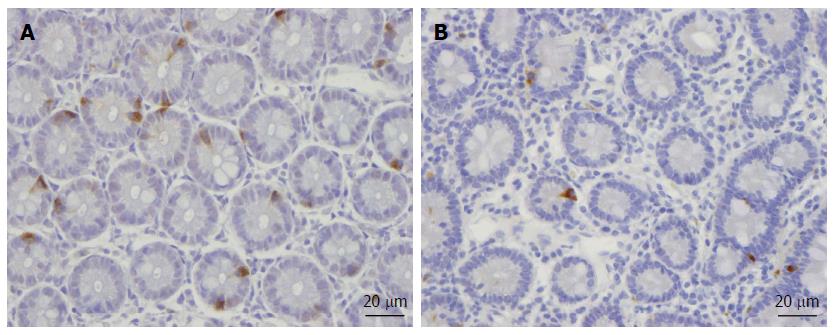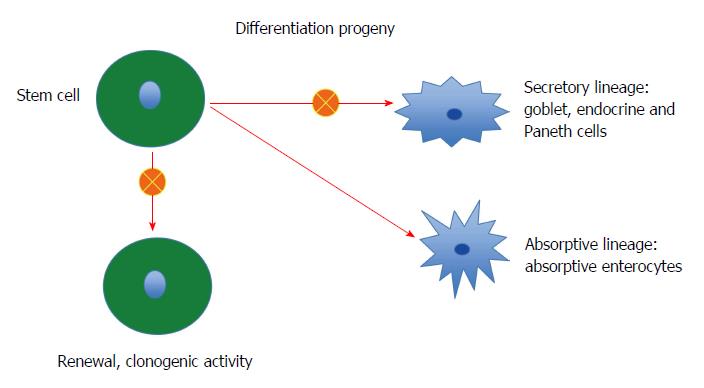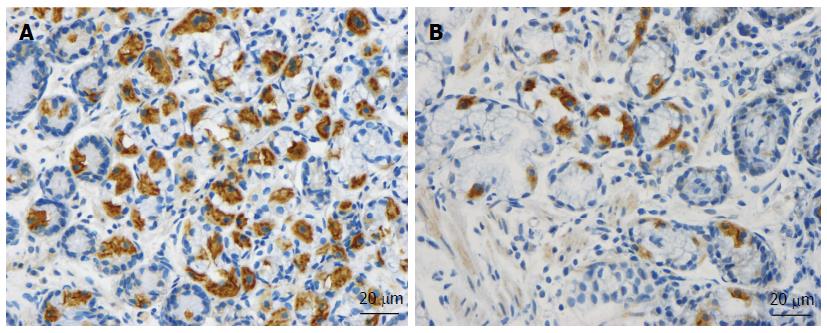Copyright
©The Author(s) 2015.
World J Gastroenterol. Jul 7, 2015; 21(25): 7621-7636
Published online Jul 7, 2015. doi: 10.3748/wjg.v21.i25.7621
Published online Jul 7, 2015. doi: 10.3748/wjg.v21.i25.7621
Figure 1 Chromogranin A-immunoreactive cells in (A) a healthy subject and (B) an irritable bowel syndrome patient.
Figure 2 The intestinal stem cell exerts 2 activities: clonogenic activity, where it produce a copy of itself to maintain the number of stem cells constant in the crypts, and differentiation activity.
The differentiation consists of 2 lineages: secretory lineage and absorptive lineage. Through a cascade of progenitors the secretory lineage give rise to goblet, endocrine and Paneth cells and the absorptive lineage to absorptive enterocytes. In IBS patients, both clonogenic and differentiation activities are abnormal.
Figure 3 Msi-1-immunoreactive cells in duodenum of subjects from the (A) control, and (B) irritable bowel syndrome patient.
Figure 4 NEUROG3-immunoreactive cells in (A) a healthy subject and (B) an irritable bowel syndrome patient.
Figure 5 Schematic drawing to illustrate the possible pathophysiology of irritable bowel syndrome.
Details are described in the text. IBS: Irritable bowel syndrome.
- Citation: El-Salhy M. Recent developments in the pathophysiology of irritable bowel syndrome. World J Gastroenterol 2015; 21(25): 7621-7636
- URL: https://www.wjgnet.com/1007-9327/full/v21/i25/7621.htm
- DOI: https://dx.doi.org/10.3748/wjg.v21.i25.7621













